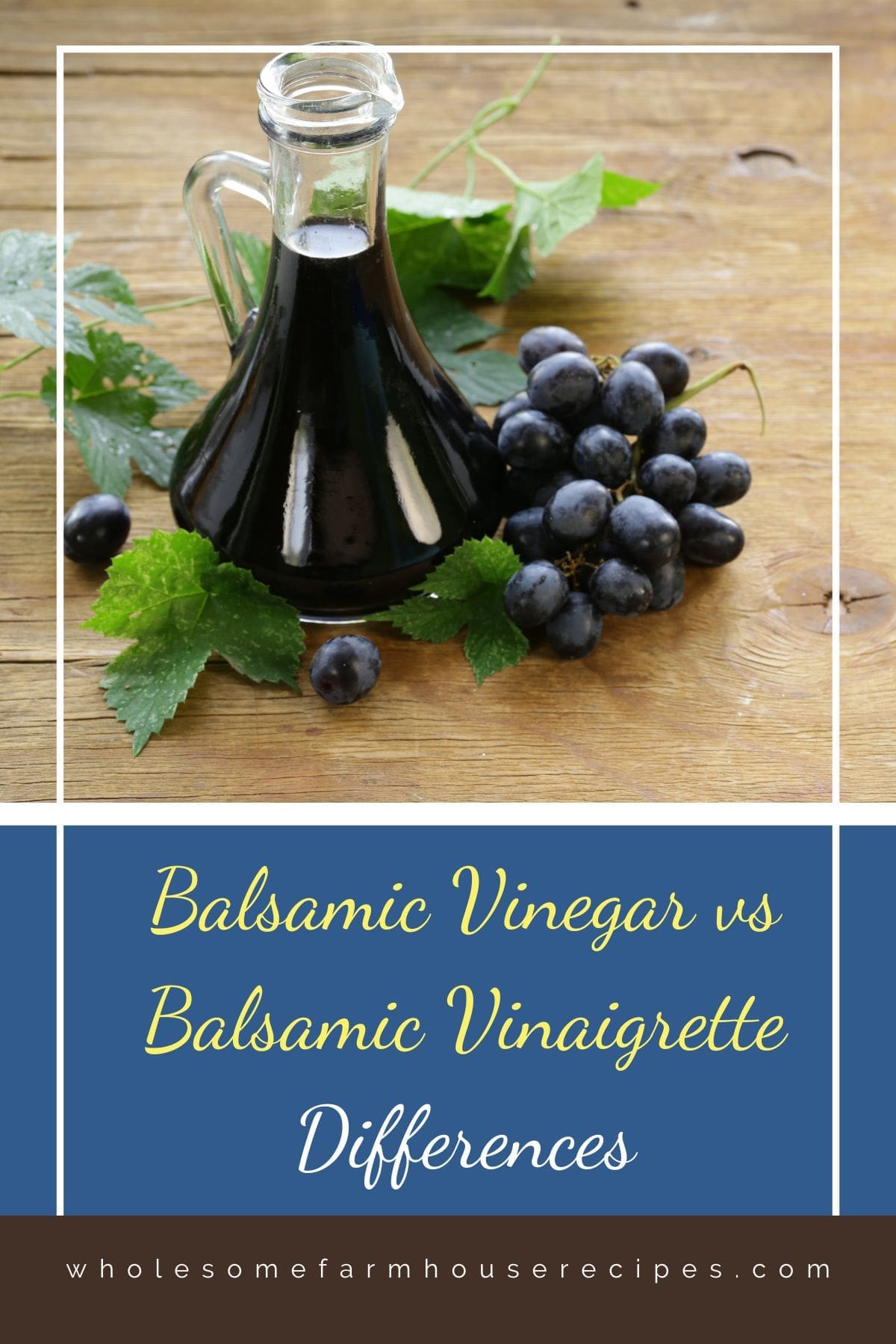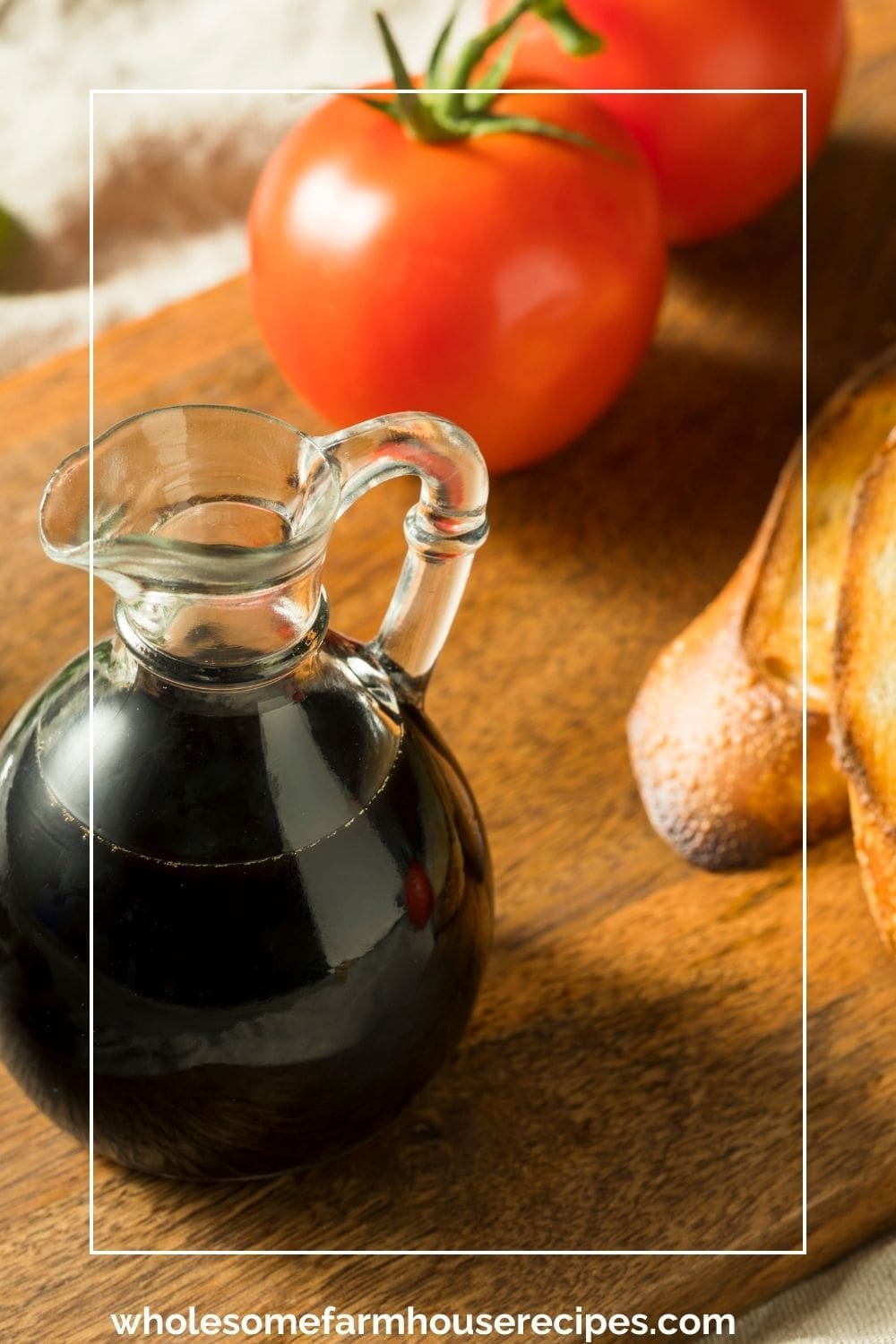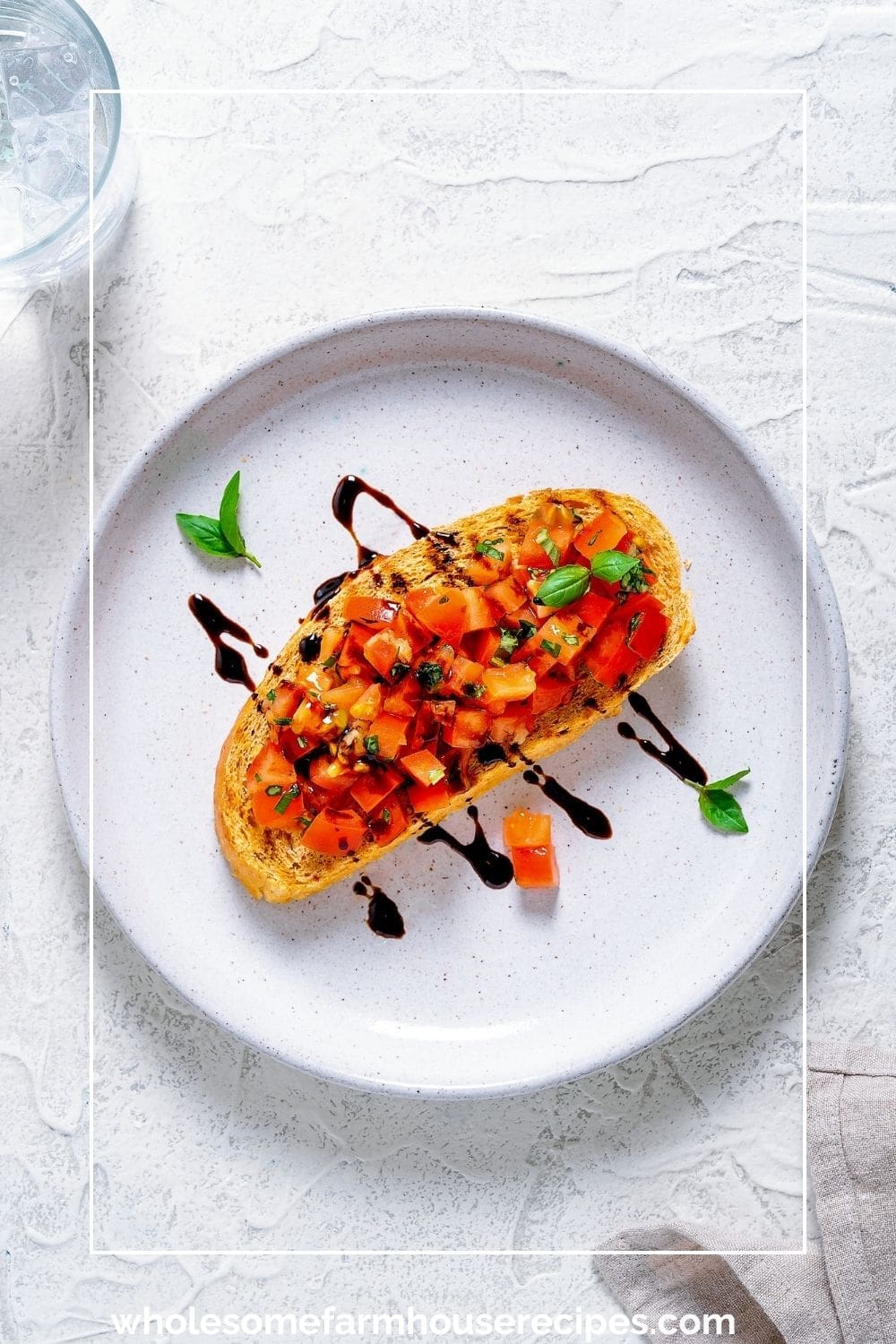When it comes to enhancing the taste of our dishes, two condiments stand out: balsamic vinegar and balsamic vinaigrette. These dark, syrupy liquids have graced our salads, marinades, and even desserts. But what sets them apart? Are they interchangeable, or do they each bring their unique flair to the table?
Balsamic vinegar and balsamic vinaigrette are staples in numerous kitchens, adding rich flavors to meats, vegetables, and salads. While they may appear interchangeable, there’s a subtle distinction between the two. In this article, we’ll delve into the nuances, unique flavors, and culinary applications of these delightful elixirs.
According to Prepared Cooks the main difference between balsamic vinegar and balsamic vinaigrette is what they are made of. Balsamic vinegar is composed of just pure and concentrated vinegar, while balsamic vinegar is a mix of pantry staples like vinegar, oil, and additional spices or herbs.

How do They Taste?
Balsamic Vinegar
Balsamic vinegar isn’t shy. Its bold flavor demands attention, whether drizzled over salads, roasted vegetables, or even strawberries. Despite its high acidity, this type of vinegar surprises the palate with a delightful sweetness. Imagine a harmonious blend of tartness and fruity sweetness.
As this vinegar ages in wooden barrels, it develops layers of flavor. You’ll find hints of:
- Fruit: Think grapes, plums, and figs.
- Wood: The oak or cherry wood imparts subtle woody notes.
- Caramel: A touch of caramelization adds depth.
It has an intense flavor and a little goes a long way.

Balsamic Vinaigrette
Balsamic Vinaigrette has a more balanced flavor profile. It adapts to various dishes, from salads to grilled meats. Its flavor dances between tangy, herbaceous, and subtly sweet.
Balsamic vinegar is one of the ingredients used to make vinaigrettes. It provides a tangy base. The addition of olive oil mellows the acidity, creating a harmonious balance. Add Herbs and Spices such as basil, oregano, garlic, and Dijon mustard infusing the vinaigrette with savory and aromatic notes. Some versions incorporate honey, maple syrup, or brown sugar for a touch of sweetness.
Balsamic Vinegar: The Essence of Grapes
Ingredients:
- Grapes: Balsamic vinegar begins with freshly crushed grape juice, known as “must.” This sweet, unfermented juice forms the base.
- Aging Process: Using traditional methods, authentic balsamic vinegar is aged in wooden barrels, often oak or cherry, for several years. During this time, it undergoes a slow fermentation process.
- Acidity: Balsamic vinegar’s hallmark is its acidity, which results from the natural fermentation of sugars into acetic acid.
- Density: The reduction of liquid through evaporation during aging gives balsamic vinegar its characteristic thickness and syrupy consistency.
- Flavor Profile:
- Sweetness: Despite its acidity, balsamic vinegar boasts a delightful sweetness due to the concentrated grape sugars.
- Complexity: As it matures, balsamic vinegar develops layers of flavors—hints of fruit, wood, and caramel.
- Purity:
- Traditional Balsamic Vinegar: The crème de la crème, aged for at least 12 years (some up to 25 years). It’s pure grapes.
- Commercial Balsamic Vinegar: Often diluted with white wine vinegar or other additives. Still delicious but lacks the depth of traditional versions.

Balsamic Vinaigrette: A Symphony of Flavors
Ingredients:
- Balsamic Vinegar: The star of the show, providing tanginess and depth.
- Extra Virgin Olive Oil is the perfect balance with the acidity and it ads richness.
- Herbs and Spices: Basil, oregano, garlic, Dijon mustard—these flavor enhancers create a harmonious blend.
- Sweeteners: Honey, maple syrup, or brown sugar—adding a touch of sweetness.
- Emulsion:
- Whisking Magic: Balsamic vinaigrette is an emulsion—a stable mixture of oil and vinegar. Whisking or shaking these ingredients together creates a unified dressing.
- Versatility:
- Salad Dressing: Balsamic vinaigrette shines as a salad dressing, drizzled over greens, tomatoes, and cheese.
- Marinade: It infuses meats, poultry, and vegetables with flavor before grilling or roasting.
- Dipping Sauce: Perfect for crusty bread or veggies.
Shelf Life: Balsamic Vinegar vs. Balsamic Vinaigrette
How Long Does Balsamic Vinegar Last?
Balsamic vinegar, like a well-aged wine, boasts impressive staying power. Its shelf life can stretch for decades. Traditional Varieties: The crème de la crème—aged in oak barrels for 12 to 25 years—can last up to twenty years.
Authority Health Magazine states that technically, the shelf life of balsamic vinegar is 4 to 5 decades, and this is true for the traditional varieties of vinegar (red, silver, and gold) aged in oak barrels for 12 to 25 years. The longer they are stored, the better they become. Each year adds depth and complexity to its flavor profile.
Properly sealed and stored, balsamic vinegar remains safe to use indefinitely. However, its taste may gradually mellow over time.
How Long Does Balsamic Vinaigrette Last?
Balsamic vinaigrettes, being more complex, have a shorter shelf life compared to their pure counterpart. Aim to use open bottles of balsamic vinaigrette within two to three years. Unopened store-bought dressing use within five years. Beyond this period, you may notice a change in color and a slightly duller taste. Balsamic vinaigrettes blend vinegar, oil, herbs, and spices. These additional ingredients affect their longevity.
Culinary Applications
- Cooking: Balsamic vinaigrette works wonders in marinades, dressings, and as a flavor enhancer.
- Salads: Its tangy notes elevate salads, making them a delightful experience.
Whether you’re savoring the timeless elegance of balsamic vinegar or embracing the fresher allure of balsamic vinaigrette, both add a touch of culinary magic to your meals.
How to I make my own balsamic vinaigrette.
We have a few recipes for you that are very simple to make. It just takes a few ingredients and less than 5 minutes to make your own salad dressing.
Maple Balsamic Vinaigrette Salad Dressing Recipe
4 Ingredient Balsamic Vinaigrette

What is Balsamic Glaze?
Balsamic vinegar glaze, also known as balsamic reduction, is a concentrated and syrupy sauce made from balsamic vinegar. It’s created by simmering balsamic vinegar until it thickens and becomes more viscous. Balsamic glaze has a concentrated flavor—both sweet and tangy. It combines the richness of balsamic vinegar with a touch of sweetness.
Balsamic glaze is a versatile condiment that is perfect for drizzling over various dishes like grilled meats (such as chicken or steak), roasted vegetables (such as brussels sprouts), salads (especially Caprese salad), and a variety of fresh fruit (like strawberries or peaches).
Many professionals use it as a way to add visual appeal to plated dishes. The deep color adds depth to food presentations. It adds a finishing touch to so many dishes and it’s perfect for everyday use.
How to Make Your Own Balsamic Glaze?
It is a basic recipe that makes it easy to make your own glaze with a thick consistency. The Kitchn recipe uses only high-quality balsamic vinegar is essential for a flavorful glaze.
However, you could add sweetener if you prefer. Some recipes include brown sugar, maple syrup, or other added sugar sweeteners to balance the acidity.
Preparation
Pour the vinegar into a small saucepan and bring to a boil using medium-high heat. Reduce the heat to medium and simmer for 15-20 minutes, stirring occasionally. Until the vinegar thickens, and coats the back of a spoon, and is reduced to about 1/2 cup. Set it aside and let it cool for 10 minutes. It will thicken a bit more into a thick syrup as it cools.
Storage
Once cooled, pour the glaze into a lidded mason jar or other airtight container and store it in the refrigerator. It can last for several weeks.
How to Make Your Own Balsamic Glaze?
As an Amazon Associate I earn from qualifying purchases.
Kitchen Essentials
Ingredients
- 2 Cups Balsamic Vinegar
- 1 Tablespoon Brown Sugar maple syrup, or other added sugar sweeteners to balance the acidity optional
Instructions
- Pour the vinegar into a small saucepan and bring to a boil using medium-high heat. If adding a sweetener, add this now.2 Cups Balsamic Vinegar, 1 Tablespoon Brown Sugar
- Reduce the heat to medium and simmer for 15-20 minutes, stirring occasionally. Until the vinegar thickens, and coats the back of a spoon, and is reduced to about 1/2 cup.
- Set it aside and let it cool for 10 minutes. It will thicken a bit more into a thick syrup as it cools.
Your Own Private Notes
Notes
Storage
Once cooled, pour the glaze into a lidded mason jar or other airtight container and store it in the refrigerator. It can last for several weeks.Nutrition
Remember, this sticky-sweet liquid gold elevates ordinary meals to extraordinary ones. It’s a great choice to have in your pantry stock.








